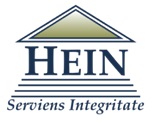Keywords
actions for damages, determination of the entities liable to provide, compensation, principle of economic continuity, autonomous concept of, undertaking, effectiveness of EU competition law
Abstract
In the tradition of civil law Member States, civil liability issues are linked to the legal entity that caused a damage, with the exception of lifting the corporate veil. The Finnish competition authority imposed fines to Finnish companies that participated in an asphalt cartel. Following that decision, an action for damages was lodged for infringement of Article 101 TFEU that ultimately led to the Skanska ruling. The European judge completes and specifies some ambiguities of the Damages Directive. From a holistic point of view of the objective pursued by both public and private enforcement of European competition law rules, the economic entity of an ‘undertaking’, as it is defined by European law rather than the legal entity as it is defined by national law, must be a substantive criterion, and not a procedural one, in civil liability procedures before national courts awarding damages for European law infringements. Introducing the principle of economic continuity to national civil liability procedures is a creeping harmonisation of national civil law in order to serve the effectiveness of European competition law. The scope of Skanska could also extent to Article 102 TFEU infringements. Corporate restructuring must follow from now on a lengthy and complex due diligence as the acquirers could be liable for their predecessors’ infringements in any Member State.
Recommended Citation
Fasoula, V. (2019). Extending the Principle of Economic Continuity to Private Enforcement of Competition Law. What Lies Ahead for Corporate Restructuring and Civil Damages Proceedings after Skanska? Case Comment to the Judgement of the Court of Justice of 14 March 2019 Skanska Industrial Solutions and others (Case C-724/17). Yearbook of Antitrust and Regulatory Studies, 12(20), 259-268. https://doi.org/10.7172/1689-9024.YARS.2019.12.20.11
First Page
259
Last Page
268
Page Count
9
Received Date
08.06.2019
Accepted Date
16.08.2019
DOI
10.7172/1689-9024.YARS.2019.12.20.11
Publisher
University of Warsaw








